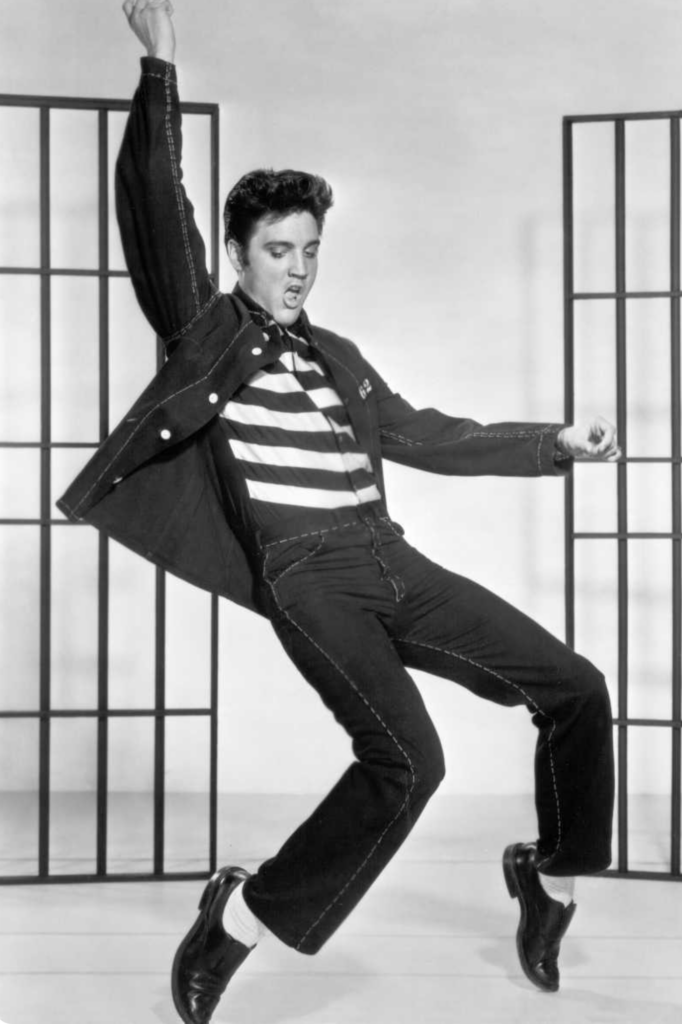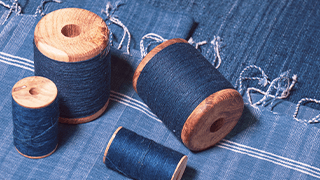History of Denim
Origins of “Jeans” & “Denim”
Where does the word “jeans” come from?
Jeans date back to 1567 with the introduction of the word “genoese” or “genes” to describe the tough twill trousers worn by merchant sailors from the Italian coastal city of Genoa.
Where does the word “denim” come from?
Denim dates back to the 17th century. Created in Nîmes, France, serge de Nîmes was a cotton twill cloth made of wool and silk. It later became known simply as “denim.”
Levi Strauss & Co.
Denim as we know it today originated in 1860, when Levi Strauss & Co., which was making work pants out of a stiff canvas fabric, added serge de Nîmes to its product line at the request of customers wanting a softer, less chafing fabric.
In 1873, Levi Strauss and Jacob Davis patented their riveted work pant that kept the pocket and seams from bursting when doing heavy work. Denim was the staple of farm and industrial wear throughout the late 1800s and mid-1900s. It still retains the title of America’s favorite work pant today.

Denim in Fashion
During the 1950s, young America discovered blue jeans and the industry exploded in the United States. Blue jeans went from being sold as solely a work and utility fabric to capturing the interests of the fashion-conscious public.
This fashion soon spread to other cultures and denim became more than just a piece of fabric, it grew into a social statement. Companies like Levi Strauss and H.D. Lee quickly responded when American and European teenagers embraced denim jeans as embodying the “Elvis” or “James Dean” look.

Elvis Presley, Jailhouse Rock

James Dean, Rebel Without A Cause
Characteristics of Denim
The basic denim jean gets its unique character from its yarn, indigo dyestuff, weaving and design, and washes and technical finishes.
Like other fabrics, denim can be dyed, washed down, chemically finished, or mechanically finished.
Chemical finishes can include the application of such substances as DP or durable press, softeners, stain repellents, water repellents, and others.
Mechanical finishing can include brushing, sanding, laser etching, color discharge, and many other novel effects.
These effects are made possible by the special character of denim yarns, the special character of indigo dyed yarns, specialized garment processing machinery, denim garment washing and finishing processes, denim garment overdyeing, and denim garment functional finishing.
Denim Yarn
The final look and feel of a denim garment depend in large part on its yarn. Yarn can range from soft to firm, even to uneven, weak to strong. The yarn’s twist direction and level of twist also impact the final effect of garment finishing as does the choice of ring or open-end spun yarn. In recent years, advances in the production of effect yarns, such as slub, accent, and stretch yarns have also played a part in developing new looks. With denim, yarn evenness is important. Even yarns provide a smooth surface that washes down or abrades to a uniform shade. Uneven yarns that vary in thickness result in great variations in shade. In fact with some abrasion finishing processes, thick areas can be abraded down to the white yarn core of the indigo dyes while the thin areas might be hardly abraded at all.
Yarn twist has a similar impact on color and abrasion results. Low twist yarns are softer and tend to wash down or abrade more rapidly than higher twist yarns. Yarn twist also affects fabric hand, stiffness, strength, skew, cover, drape, appearance, and other characteristics. Another yarn characteristic that impacts finishing is size including the mixture of yarn sizes in a single fabric. Varying yarn sizes will affect finishing in a way similar to that of slub yarns. Slub yarns are yarns spun to have long and thick effects in them with subs in either the warp, filling, or both. Open-end and ring-spun yarns can both obtain slub effects.
Indigo Dye
Indigo dye is one of the most important factors affecting the look of denim. When indigo dyes are used, it gives the denim fabric a unique ability to fade in color after repeated laundering.
Indigo dye originated as a vegetable dye from the Indigofera tinctoria plant from India and Africa thousands of years ago. An indigo-dyed robe was found during an excavation in Egypt and is estimated to have been made around 2500 B.C.
In the Americas at the same time, a different type of indigo plant, Indigofera suffruticosa or Indigofera erecta, was used to make Natal indigo dyes. It was an important dye for the Mayan people who used it to paint their sacrifices prior to scarification as well as dyeing the royals clothing.
In the cooler climates of the world, like Europe, indigo was also produced from the Isatis tinctoria, or woad plant, and Polygonum tinctorium, also known as dyer’s knotweed.
In 1878, German chemist Adolf von Baeyer invented the first synthetic indigo dye. In fact, indigo was the first synthetic indigo dyestuff. By 1914, almost 95% of the natural indigo trade had disappeared. Today, synthetic indigo dyestuff accounts for essentially 100% of all denim products.

Indigofera tinctoria (true indigo)
During the 1980s, there was a designer jean craze with many styling variants. This phase ended in the 1990s when Levi Strauss & Company created the “Back to Basics” slogan. This began the revival of the ringspun denim but by the mid-90s, the designer jean craze had resurfaced with many companies producing their own brands. Now, advances in finishing techniques especially garment processes and fabric technology have created a high-tech denim jeans market.
Indigo dye yields a deep, bright shade of blue but with a low affinity for cotton, and as a result, it can be easily washed down in mill processing. Even the most state-of-the-art synthetic versions of indigo have an improved cotton affinity. Ring-dyed cotton is the key to many current denim garment finishes. Ring-dyed or white core cotton refers to yarn that is dyed with indigo in such a way as to keep the core of the yarn white. The white core is clearly visible. Without this ring-dyed effect, many of the most popular denim garment looks would not be possible but with proper cloth construction, dyeing, garment manufacturing, and finishing techniques, denim continues to take on fresh new looks.


